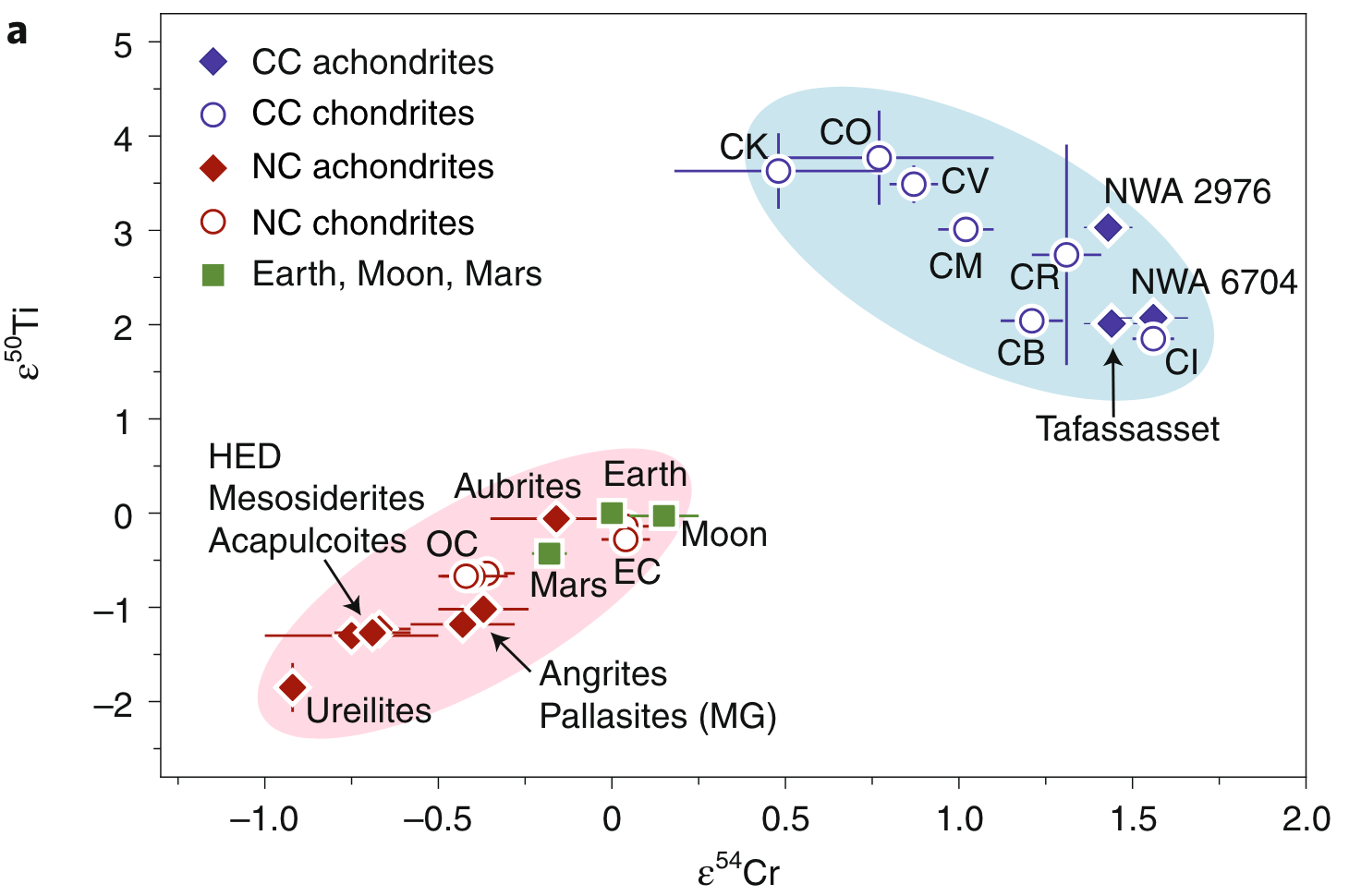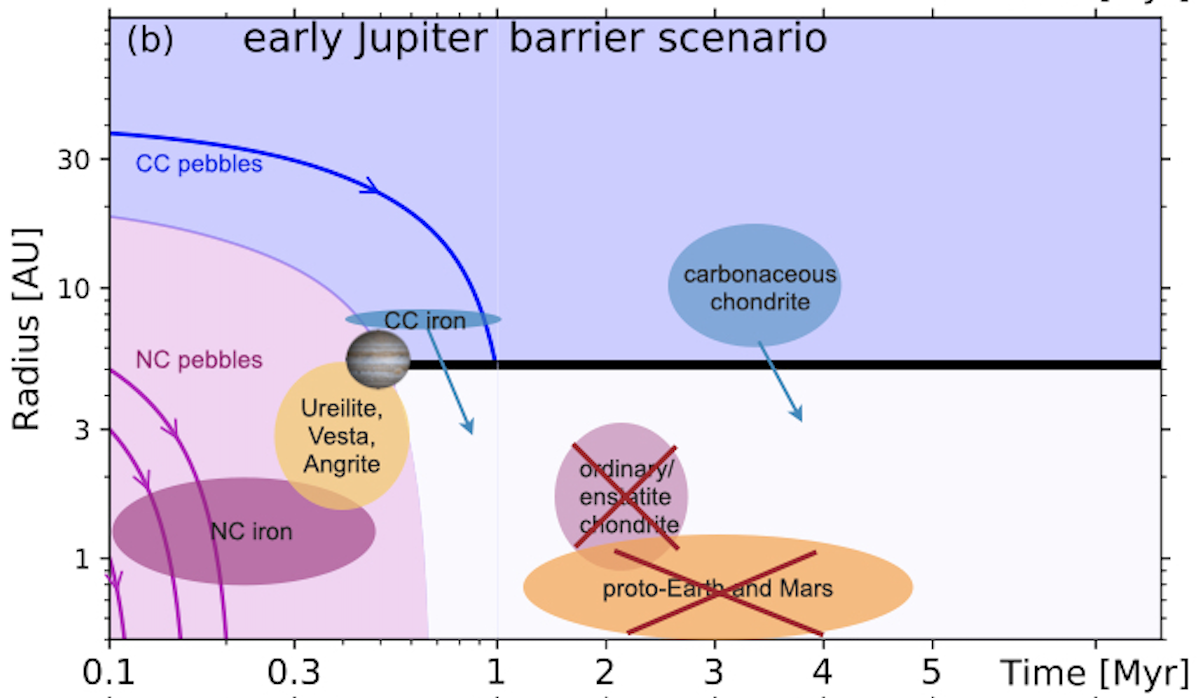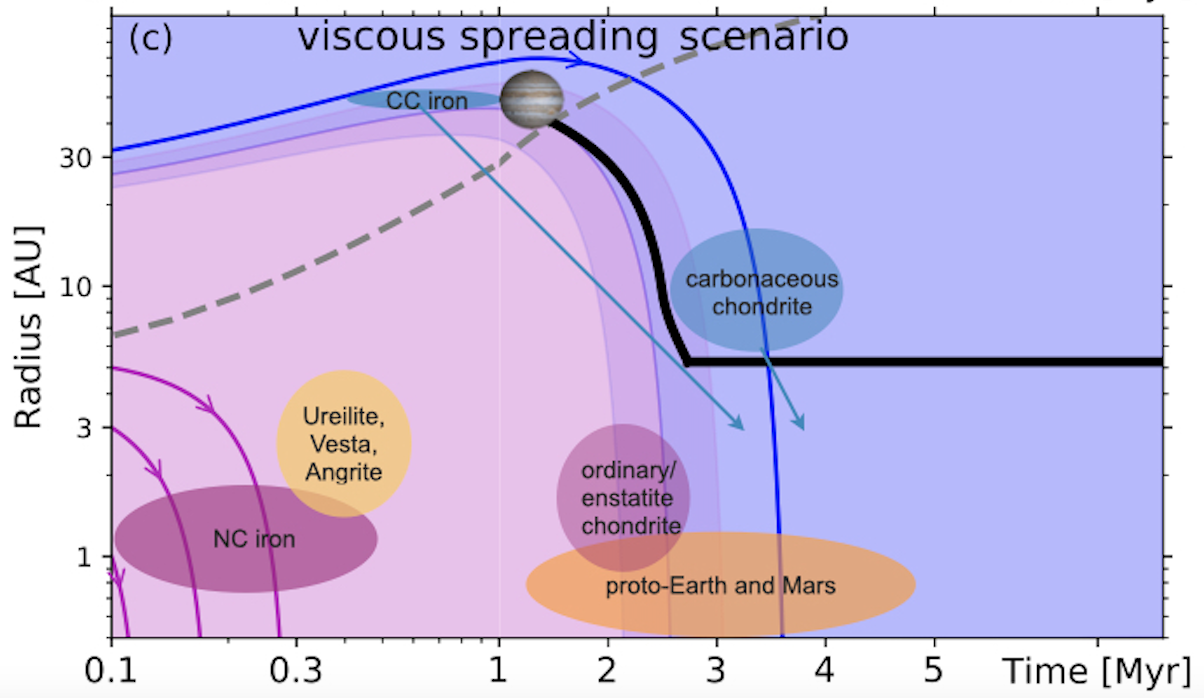
Figure 1: dichotomy in the isotopic composition of Ti and Cr between NC (red) and CC (blue) meteorite groups.

Figure 2: Cartoon illustrating that the early Jupiter formation model cannot explain the NC-CC dichotomy.

Figure 3: Cartoon illustrating that spreading disk model can explain both NC-CC dichotomy and terrestrial planet composition.
Meteorites display an isotopic composition dichotomy between noncarbonaceous (NC) and carbonaceous (CC) groups, indicating that planetesimal formation in the solar protoplanetary disk occurred in two distinct reservoirs (see Fig.1). The dichotomy, despite exhibits minor isotopic difference of the order of 10^-4 , holds for many elements with various condensation temperatures, and both for differentiated and primitive groups of meteorites.
The prevailing view is that a rapidly formed Jupiter acted as a barrier between these reservoirs. We show a fundamental inconsistency in this model (Fig.2): If Jupiter is an efficient blocker of drifting pebbles, then the interior NC reservoir is depleted by radial drift within a few hundred thousand years. If Jupiter lets material pass it, then the two reservoirs will be mixed. Hydrodynamic models have shown that gap opening of Jupiter can only block a partion of total drifting dust, making it inpractical to explain such dichotomy.
Instead, we demonstrate that the arrival of the CC pebbles in the inner disk is delayed for several million years by the viscous expansion of the protoplanetary disk. This is termed spreading disk model. The disk angular momentum is transported by viscous spreading. So that the gas in the inner disk diffuses inward, while the gas in the outer disk spreads outward. The overall angular momentum in the disk is conserved through this process. As a consequence, the disk in the outer disk can first drift outward for a few Myr. Then they decouple well from the moving gas, and eventually drift inward to the inner asteriod belt and terrestrial planet regions (Fig.3).
Our results support the hypothesis that Jupiter formed in the outer disk (>10 astronomical units) and allowed a considerable amount of CC material to pass it and become accreted by the terrestrial planets. An expanding young solar gaseous disk model better explains the formation and isotopic composition of meteorites and planets. See details for Liu, Johansen, Lambrechts, Bizzarro, Haugbolle, 2022, Science Advances [ADS] [arxiv].